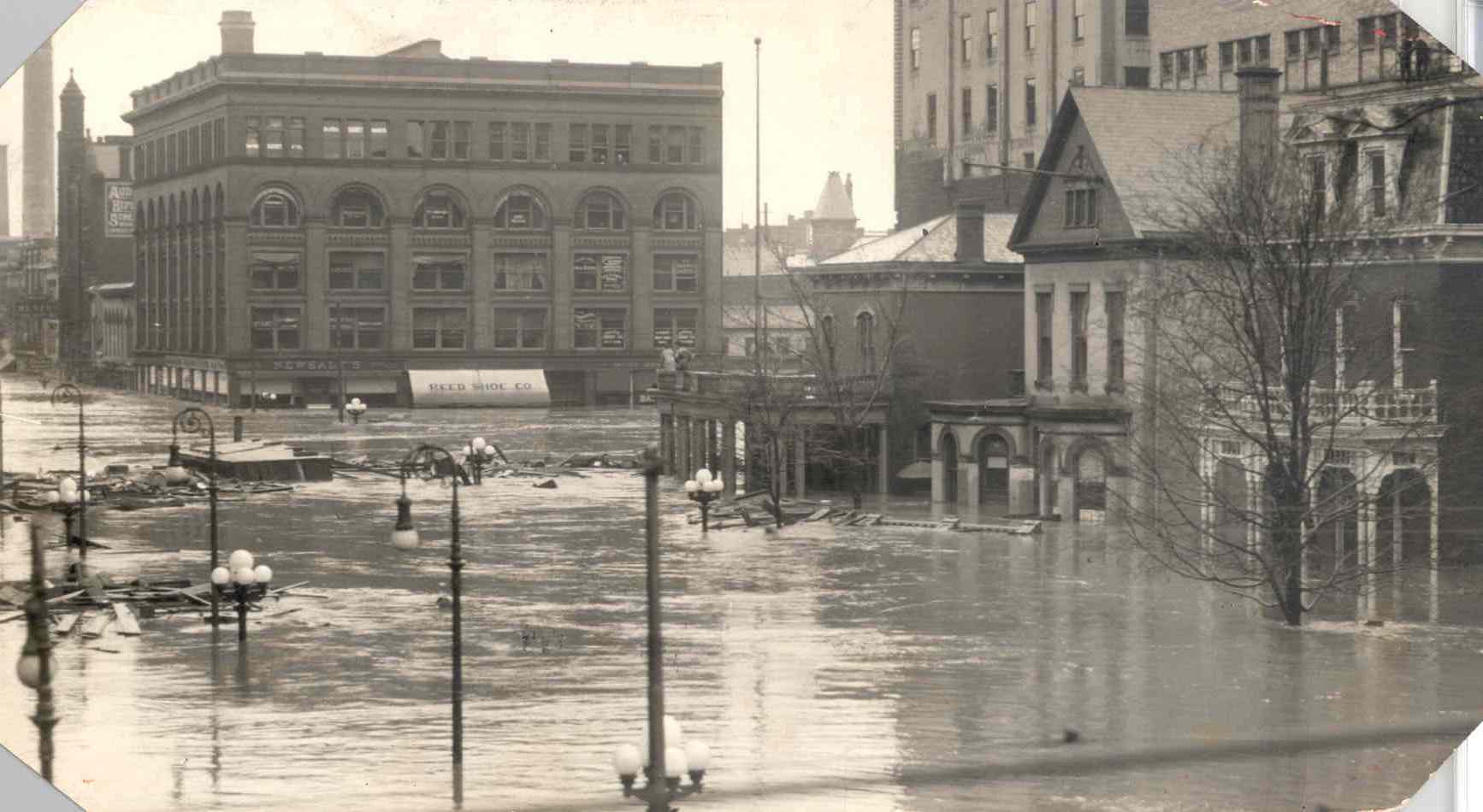A few weeks ago you may have looked out in downtown Dayton and seen the Great Miami River rising pretty high due to all the rainfall we got at the end of February.
Now, imagine that times 10 and that is the level the water was during the Flood of 1913. It was one of the worst floods to hit the U.S., and caused $333 million in property damage and left approximately 650 people died throughout 14 states. Dayton was especially hit hard.
Throughout Ohio, 467 lost their lives and the flood remains the deadliest in the state’s history. In Dayton, an estimated 360 died due to the flood, and $100 million worth of property damage was caused.
Flooding was nothing new for Dayton, as the city would face floods every other year, with some major ones occurring in 1805, 1828, 1847, 1866 and 1898. Downtown was built in the Great Miami River’s floodplain, which originally was seen as a positive due to the reliance on water for transportation and trade.
The disaster began on Easter Sunday, March 23, 1913. A mix of winds reaching 56 mph and cold fronts converging from Canada and the Gulf of Mexico created at least two low pressure systems hovering over central Indiana and northern Ohio over four days.
The next day precipitation amounts ranged between 8 and 11 inches, caused the river to reach 11.6 feet, the high for the year at that point. Come midnight on March 25, warning sirens and alarms began blaring as the Dayton police were warned of the weakening of the Herman Street levee. By 8:00 a.m., the levees failed and downtown began to rapidly flood.
The water continued to rise during the day and the river reached a height of 20 feet by 1 a.m. on March 26. On the same day, a gas explosion occurred and triggered several fires that scorched a city block.
The city was in disarray and Ohio Governor at the time, James M. Cox, sent the Ohio National Guard to support recovery efforts. Cox also called on legislature that appropriated $200,000 ($11 million today) to emergency aid funds. President Woodrow Wilson and the American Red Cross also sent supplies and personnel to the communities that were hit hardest.

In the aftermath of the flood, some victims made their way to the National Cash Register (NCR) factory and headquarters. John H. Patterson, president of the company, assisted flood victims by sending rescue teams into the city.
He also turned the NCR facilities around Dayton into a temporary campground for those affected, providing food, shelter and doctors.
Patterson also provided news reporters and photographers access to equipment and communications to file their stories. At some point the presses of the Dayton Daily News became inoperable because of flooding. Reporters were allowed to use NCR’s in-house printing press, enabling proper press coverage of the disaster.
In an effort to prevent a disaster of this magnitude repeating, the Miami Conservancy District was established in 1915. Engineer Arthur Ernest Morgan was hired to design a series of dams and levees to control the flow of water. It took several years to finish the massive undertaking. They wanted to improve the river channel by dredging and straightening out the river’s course.
The building process started in 1918 and ended in 1922. The effort was the largest public works project of the day and cost roughly $35 million.
Following this, the department moved on to other water management measures, including improving groundwater and surface water quality, protecting well fields, providing incentives to farmers to reduce nutrient runoff, building recreation facilities on the preserved land and planting of hundreds of trees in the basin.
The relief efforts proved successful, as the city has never faced flooding as intense again. Dayton’s response became a model for other cities facing flooding issues.
As relief efforts were made and the water level fell, the total damage was taken into account. In all, 360 people died, 65,000 were displaced. An estimated 1,400 horses and 2,000 other domestic animals perished.
Approximately 20,000 homes were destroyed and several buildings were moved off their foundations. The property damage to homes, businesses, factories and railroads were estimated at over $100 million.
The Flood of 1913 was the second deadliest flood in U.S. history and affected 14 states, going from Vermont to Michigan to Louisiana. Due to this, it is considered the country’s most widespread natural disaster.
Despite this, each city that was devastated by it continues to remember it on a local level, making it a crucial part of their history. Here, it is called the Great Dayton Flood, those in Indiana would call it the Great Indianapolis Flood.
The scars remained for many of the people affected by the disaster. Hamilton, maybe the worst hit part of the city, only began to embrace the uses of the Miami River in the 1980’s.
As we approach the 105th anniversary of the disaster, many still remember the impact the flood left and the memory of those who lost their lives.
Henry Wolski
Executive Editor

